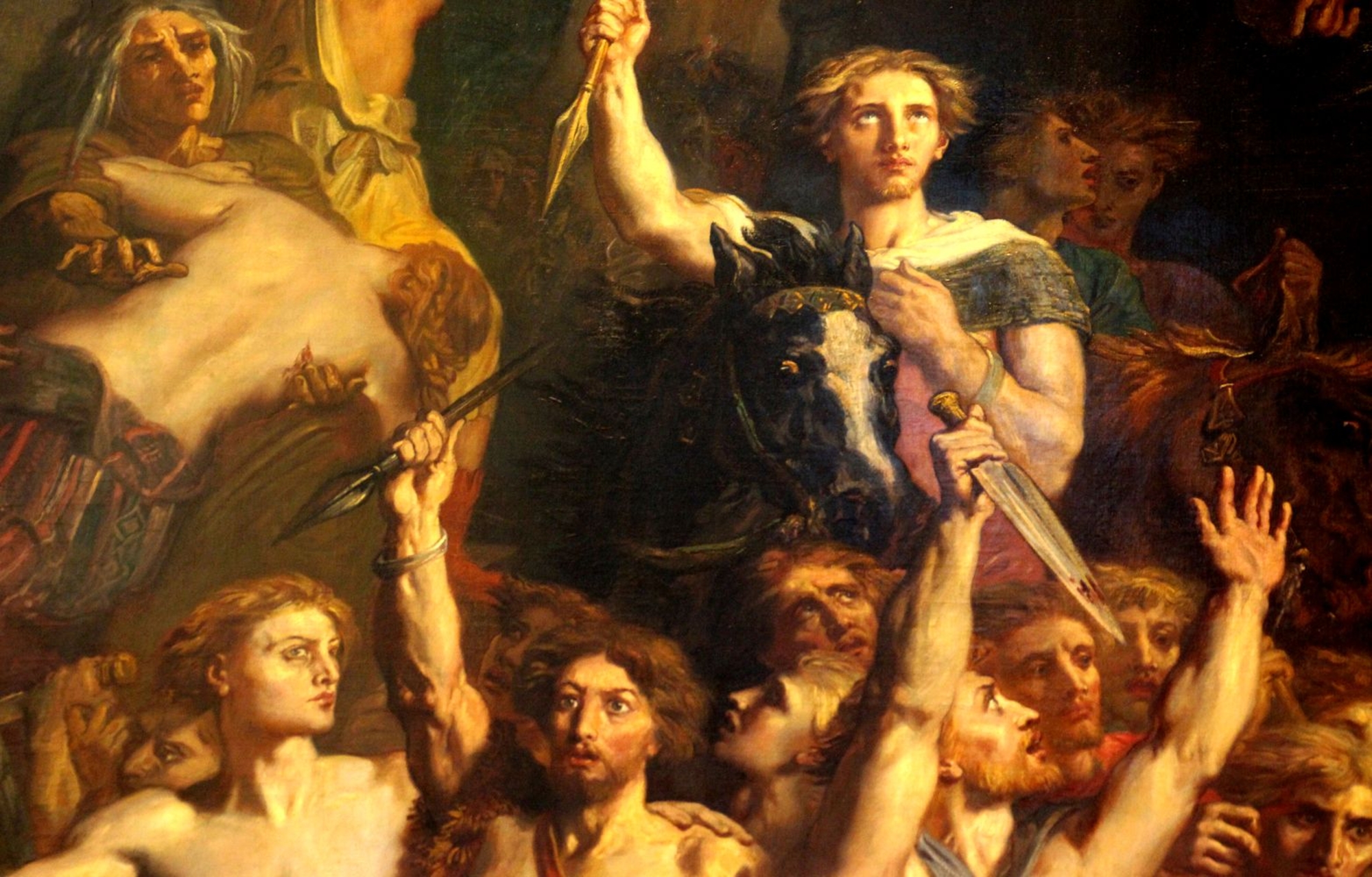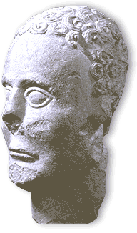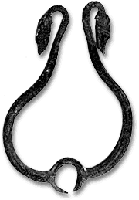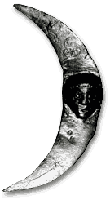- Home
- Society and power
- The statues
- Dating the statuary
Aged man with his hair brushed back and attached with a braided crown, discovered in 1943.
Head of a juvenile with hair in large curls, discovered in 1946.
A settlement of the 2nd century BC
The first agglomeration established at the extremity of the Entremont plateau dates to around 175 BC. No objects older than this date have been found at the site, which appears to have been completely deforested at the time of its installation. The only trace of occupation from the beginning of the Iron Age is associated with the remains of a portico with monolithic stone columns and steles. However, it is not certain that this structure was built precisely at the location of the agglomeration.
Until recently, the production of the sculpted pieces of Entremont was considered to be contemporary with the occupation of the settlement (175 to 124 BC). In fact, the only certainty is that this statuary had already been destroyed and reused as a raw material during the last stage of the second agglomeration, meaning after the first siege of the surrounding area from 125 to 124 BC.
The sculptures are more ancient!
A critical reexamination of the context of discovery assures only that all of the statue fragments were excavated after they had already been dispersed and many of them reused in the foundation (radier) of the access road to settlement 2.
This sector is also near one of the entrances to settlement 1. If we eliminate the hypothesis that these stones were imported from a plain site, the period of their public presentation at Entremont would have been between 175 and 125 BC.
The analysis in progress of the arms and jewelry represented on the sculpted figures adds new fuel to this debate. Most of the Celtic defensive and offensive arms, horse harnesses and cavalier equipment, and even the rich jewelry, correspond to the types in circulation during the 3rd century in western Europe. This contradiction is surprising and cannot be resolved through analysis of stratigraphic sequences alone. The site was certainly occupied from 175 to around 100 BC, while the statuary was more than one century older!
Transformations that occurred at Entremont during the rapid installation of the second habitat, over an area four times as large, offer an explanation of this observation.
Piece of a horse harness: bronze rein guide decorated with the head of a dog.
Horse ornament: bronze phalera decorated with a human head.
Grouping of statuary in the habitat in the second century BC
The statuary is regrouped in settlement 2 during the 2nd century BC The enlargement of the Entremont agglomeration responded to a need to regroup the dispersed farming communities of the surrounding territory. The primary cause for this action was the growing insecurity of the countryside in the face of increasing conflicts with Marseilles.
As has already been proposed for tools used in the transformation of agricultural products, we could imagine that the regrouped populations would have brought sculpted objects with them from the already ancient sanctuaries associated with their former residences. According to this hypothesis, their assemblage and presentation at Entremont would be contemporary with the establishment of settlement 2 at around 150 to 140 BC.




